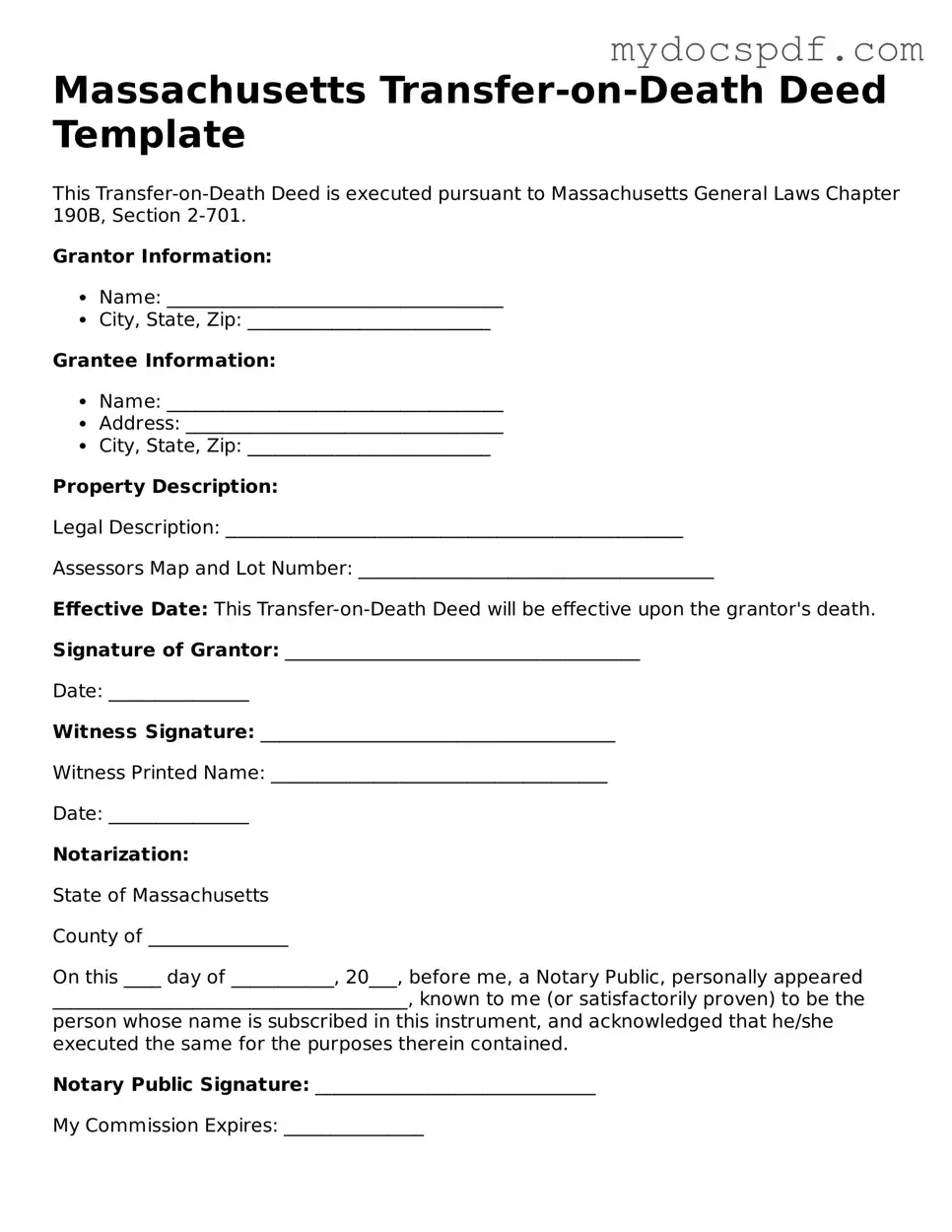Massachusetts Transfer-on-Death Deed Template
This Transfer-on-Death Deed is executed pursuant to Massachusetts General Laws Chapter 190B, Section 2-701.
Grantor Information:
- Name: ____________________________________
- City, State, Zip: __________________________
Grantee Information:
- Name: ____________________________________
- Address: __________________________________
- City, State, Zip: __________________________
Property Description:
Legal Description: _________________________________________________
Assessors Map and Lot Number: ______________________________________
Effective Date: This Transfer-on-Death Deed will be effective upon the grantor's death.
Signature of Grantor: ______________________________________
Date: _______________
Witness Signature: ______________________________________
Witness Printed Name: ____________________________________
Date: _______________
Notarization:
State of Massachusetts
County of _______________
On this ____ day of ___________, 20___, before me, a Notary Public, personally appeared ______________________________________, known to me (or satisfactorily proven) to be the person whose name is subscribed in this instrument, and acknowledged that he/she executed the same for the purposes therein contained.
Notary Public Signature: ______________________________
My Commission Expires: _______________
